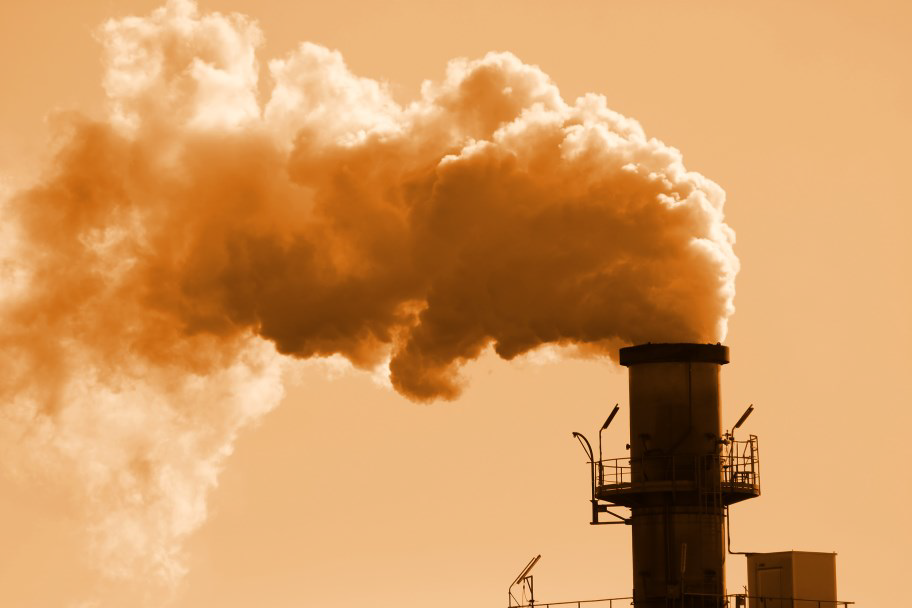WMO Greenhouse Gas Bulletin No 13
|
As scientists shine new light on the relationship between atmospheric composition and past climates, the concentration of greenhouse gases in the atmosphere continues to rise.
The World Meteorological Organisation (WMO) issues annual bulletins summarising the latest measurements of the concentrations of greenhouse gases in the Earth’s atmosphere. The latest bulletin (WMO Bulletin No. 13, 2017), which is freely available online along with those from previous years (1), reports on the observations gathered up until (and including) 2016 from a number of monitoring stations scattered across the planet.
|
The global average atmospheric CO2 concentration in 2016 was 403.3 ppm, a 45% increase from pre-industrial levels of ~278 ppm. This was accompanied by the largest year-on-year increase in CO2 concentration to date (3.3 ppm year−1) attributed to both record levels of anthropogenic CO2 emissions and the influence of the 2015-16 El Niño event, which led to enhanced natural CO2 emissions (as described in the WMO Bulletin No. 12, 2016). While anthropogenic CO2 emissions were generally thought to have slowed down (or even reached a plateau) during the period 2013-16, 2017 witnessed a significant increase (2). It will be interesting to see what effect this will have on the CO2 levels reported in next year’s WMO bulletin.
Updates on the two other major greenhouse gases, methane (CH4) and nitrous oxide (N2O), are also reported. Their concentrations in 2016 were respectively 1.853 ppm and 328.9 ppb, 157% and 22% higher than pre-industrial levels in each case. The annual increase in CH4 concentration (9 ppb year−1), was one of the largest in the last decade, following a period of effectively zero growth in the early 2000s. The rate of increase in N2O concentration (0.9 ppb year−1) was slightly lower than the average growth rate during the last decade.
In addition, each year the WMO bulletin focuses on a particular aspect of climate science. Previous editions have addressed topics such as ocean acidification (WMO Bulletin No. 10, 2014) and the effects of El Niño events on greenhouse gas emissions (WMO Bulletin No. 12, 2016). The latest edition contains an introduction to ice-core analysis and other proxy techniques used to quantify historic atmospheric CO2 levels. These studies corroborate our understanding of the relationship between greenhouse gases and the Earth’s temperature and climate. They show, for example, that changes in global temperatures during glacial and inter-glacial periods were always accompanied by variations in atmospheric CO2 concentration. Additionally, data obtained from ice cores indicates that current CO2 abundances far exceed the natural variability observed in CO2 concentrations over the last few hundreds of thousands of years (typically in the range 180-280 ppm). Proxy data suggests that elevated levels similar to those currently measured were last encountered in the mid Pliocene period (3-5 million years ago). Then, global mean surface temperatures were 2-3 °C higher than today, causing the ice sheets in Greenland and West Antarctica to melt and leading to sea levels 10-20 m higher than at present.
The 2016 Paris Agreement is seeking to keep temperature increases by the end of the century to well below 2 °C relative to pre-industrial values. The WMO bulletins are an effective way to keep up-to-date with the latest developments in the field of greenhouse gas monitoring, and they also provide very useful insights on climate science as a whole.
Updates on the two other major greenhouse gases, methane (CH4) and nitrous oxide (N2O), are also reported. Their concentrations in 2016 were respectively 1.853 ppm and 328.9 ppb, 157% and 22% higher than pre-industrial levels in each case. The annual increase in CH4 concentration (9 ppb year−1), was one of the largest in the last decade, following a period of effectively zero growth in the early 2000s. The rate of increase in N2O concentration (0.9 ppb year−1) was slightly lower than the average growth rate during the last decade.
In addition, each year the WMO bulletin focuses on a particular aspect of climate science. Previous editions have addressed topics such as ocean acidification (WMO Bulletin No. 10, 2014) and the effects of El Niño events on greenhouse gas emissions (WMO Bulletin No. 12, 2016). The latest edition contains an introduction to ice-core analysis and other proxy techniques used to quantify historic atmospheric CO2 levels. These studies corroborate our understanding of the relationship between greenhouse gases and the Earth’s temperature and climate. They show, for example, that changes in global temperatures during glacial and inter-glacial periods were always accompanied by variations in atmospheric CO2 concentration. Additionally, data obtained from ice cores indicates that current CO2 abundances far exceed the natural variability observed in CO2 concentrations over the last few hundreds of thousands of years (typically in the range 180-280 ppm). Proxy data suggests that elevated levels similar to those currently measured were last encountered in the mid Pliocene period (3-5 million years ago). Then, global mean surface temperatures were 2-3 °C higher than today, causing the ice sheets in Greenland and West Antarctica to melt and leading to sea levels 10-20 m higher than at present.
The 2016 Paris Agreement is seeking to keep temperature increases by the end of the century to well below 2 °C relative to pre-industrial values. The WMO bulletins are an effective way to keep up-to-date with the latest developments in the field of greenhouse gas monitoring, and they also provide very useful insights on climate science as a whole.
References
1. https://public.wmo.int/en/resources/library/wmo-greenhouse-gas-bulletin
2. http://www.globalcarbonproject.org/carbonbudget/17/files/GCP_CarbonBudget_2017.pdf
1. https://public.wmo.int/en/resources/library/wmo-greenhouse-gas-bulletin
2. http://www.globalcarbonproject.org/carbonbudget/17/files/GCP_CarbonBudget_2017.pdf


